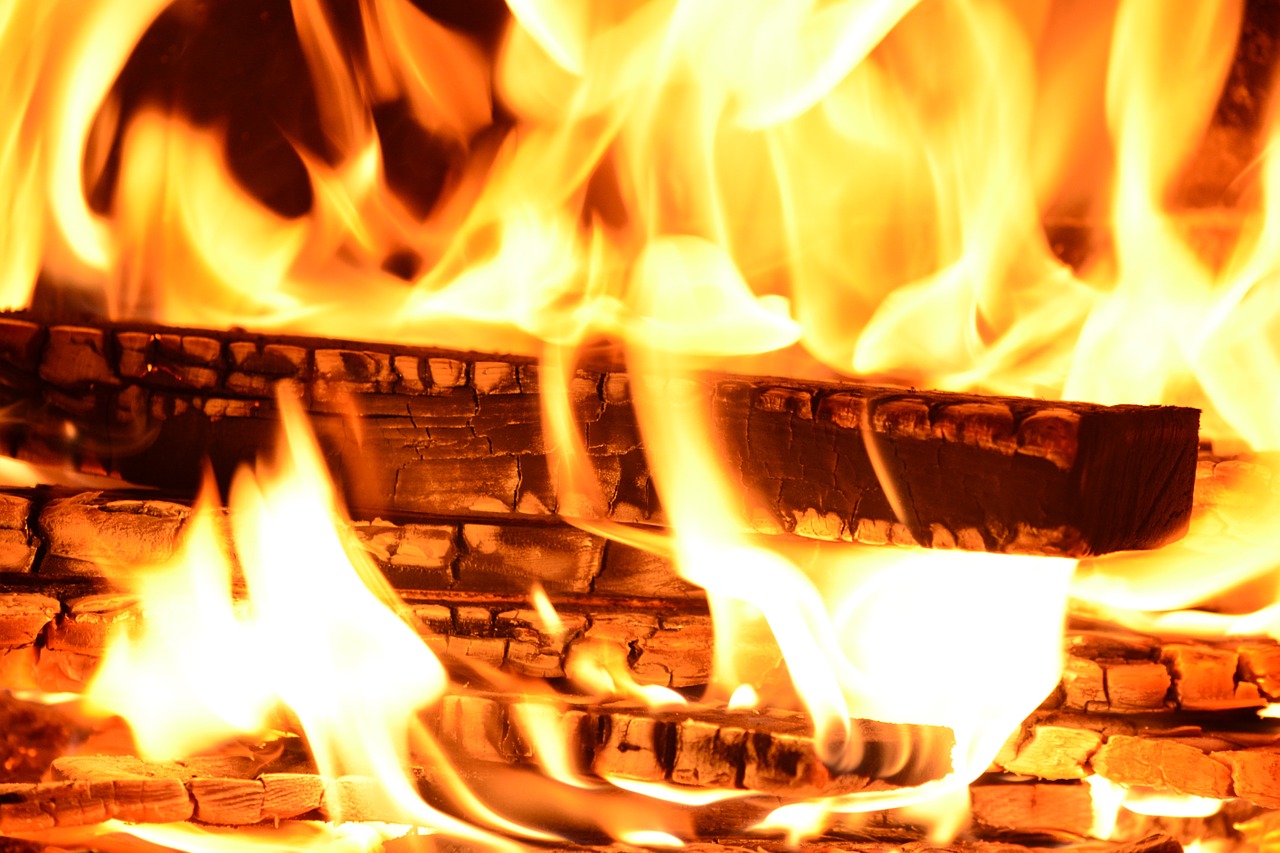Fire!
Safety and prevention in your home
When it comes to fire, knowledge and understanding are the key to keeping your family safe. Preventative measures also go a long way.
To help prevent fire from impacting your lives, here are ten ways to safeguard your family and home from fire…

10 household fire prevention tips
Install and maintain smoke detectors
Make sure that your home has at least one smoke detector on every level. Place them near sleeping areas, and in the garage. Be sure to test the batteries monthly, and replace them every year.
Keep your smoke detectors free of dust and cobwebs so they continue to work properly.
Stay safe in the kitchen
Kitchens are a hot spot for house fires, so adhere to the following precautions:
- Prevent grease build-up on the stove top or range hood by keeping things clean.
- Don’t wear long, draping clothing while cooking. Sleeves and scarves can catch fire simply by brushing up against a hot burner.
- Teach children not to play around the stove, and never leave it unattended.
- Keep flammable items—like dish towels—away from open flames.
- Keep a fire extinguisher in the kitchen and know how to use it (see below).
Know how to handle a grease fire
If a grease fire starts, don’t douse it with water or other liquid! Doing so will create steam explosions and cause the fire to spread.
If the fire is contained to a pan, throw baking soda or salt on it from above—not the side. You can also use the pan lid or a baking sheet to smother the flames.
If neither options work, get everyone out of the house and call 911 immediately.
Be cautious with candles
Candles create a lovely ambiance, but they can be dangerous if left unattended. If you light them, make sure that you use sturdy holders that won’t tip over, and that candles are kept away from anything flammable, such as curtains, books, blankets, or furniture.
Keep the doors closed
When sleeping, it’s important to keep all bedroom doors closed. Closed doors can slow the spread of fire, heat, and smoke.
Have a fire extinguisher (and know how to use it)
Everyone home should have at least one fire extinguisher, but it's a good idea to keep one in the kitchen and one in the garage.
There are various types, but you should have one that is light enough for every family member to use. Get everyone acquainted with how to use it.
A great way to remember what to do, is to recall the word PASS: Pull the pin; Aim low; Squeeze the lever slowly; Sweep from side to side.
Practice electrical safety
All electrical work in your home should be done by a licensed electrician. Any area in your home where electricity could come in contact with water—like the laundry room and garage—should have fire safety GFCI outlets.
Avoid overloading outlets and running cords under doorways, carpets, or furniture. Do not plug major appliances—like a fridge, stove, washing machine, or dryer—into an extension cord. Be sure to replace cracked or frayed cords for anything electrical, such as a table lamp.
It’s also important to use safety plugs in all electrical outlets if you have small children in your home.
Use fireplaces, woodstoves, and portable heaters safely
If you have a fireplace or woodstove, the chimney should be cleaned annually to remove soot build-up and other debris that could become a fire hazard. Keep any flammable materials—like blankets, rugs, and curtains away from the fireplace.
Keep portable heaters at least three feet away from anything flammable (same as above), and turn them off when leaving the house and going to sleep. Plug them directly into wall outlets, and be sure to check the cord for cracks or frays.
Like fireplaces and woodstoves, it’s important to keep children and pets at a safe distance—and never leave them unattended.
Have an escape plan (and practice it)
It’s important that everyone living in your home, knows what to do if there is a fire. Plan and practice a fire escape route from every room in your home. Practice this plan at least twice a year.
Establish an outside meeting place, and make sure that every family member knows how to call for help. Remember that it’s never safe to return to a burning building—ever!
Teach your children how to:
- Crawl low and keep mouth covered if escaping under smoke.
- Check the doors and handles for heat. If cool, slowly open the door to check for smoke and fire and make their way to safety. If the door is hot, use another exit.
- Open windows and climb to safety using rope or chain ladders from second floors windows.
It’s also important that children know not to hide from firefighters, and what to do if their clothes ignite. These are scary things to discuss, but it’s essential that your children know what to do in such an emergency.
Practice safe smoking habits
If you’re going to smoke, be smart about it. Have a designated container for cigarette butts and don’t ever leave lit cigarettes unattended. Keep all lighters and matches out of reach for children, and never smoke in bed.
~
If there is a fire in your home, try not to panic.
Alert everyone inside home, and get everyone outside as fast as possible using the planned escape route. Don’t stop to collect possessions or search for pets.
Once outside, phone 911. Make sure that you give the operator your full address, details of the building that is on fire, and details about anyone trapped inside.
Once the firefighters arrive, repeat the details about anyone left inside the building. Whatever you do, don’t go back into the building yourself—let the fire department do their job.
Stay safe.
